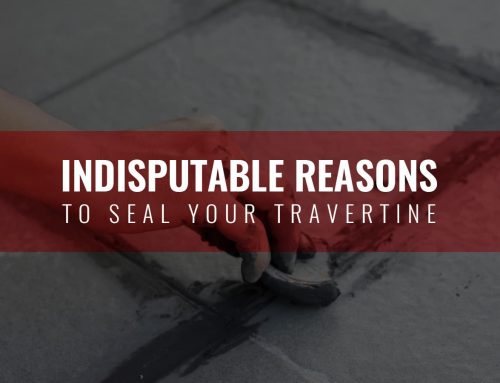Phoenix Travertine Tile Care Tips
Travertine tile is limestone with personality. The stone features pitted holes where mineral water has seeped through the limestone. Some installers will fill the holes with grout, and others prefer the natural look, leaving the holes unfilled. The unfilled travertine, of course, works better on floors than on countertops. The travertine is polished for a smooth, shiny look. The stone comes in a wide-range of colors from reds to grays.
Sealing Travertine Tiles
Once travertine tile is installed and grouted on a floor or counter top, it should be sealed to protect the stone and keep it looking new. You can test your travertine to determine if it has been pre-sealed by pouring a little water on the stone. If the stone turns dark and absorbs the water, it needs to be sealed. Check if the stone manufacturer recommends water based or oil based sealant.
Cleaning Travertine Tiles
Acid will etch travertine tiles so spills of wine, vinegar, coffee, soda, and tomato products should be wiped up immediately. For routine cleaning, a soft sponge and a cleaner that is recommended for stone should do the trick. Some professionals recommend that travertine be treated the same as hardwood furniture and coasters always be used to prevent drops from acidic drinks marring the surface. For floors, a regular dust mopping with a soft untreated mop will keep the tiles beautiful and remove sand and grit that could scratch the sealant. If you’re in Arizona, remember that we’re always available to handle all of your Travertine cleaning for you!
Repairing Travertine Tiles
Travertine repair kits are readily available to refill holes that have lost their filling or to repair cracks that have appeared from settling or use. Epoxy grout can also be used for filling holes or crack repair in travertine tiles. It is available in a variety of colors.
Replacing Travertine Tiles
If a travertine tile is beyond repair, it can be removed and replaced. Use an angle grinder to cut through the tile diagonally and close to the edge of the tile. Carefully use a hammer to bust up the tile and remove as much as you can. Hammer and chisel the remaining tile, grout, and adhesive. Once you are down to the subfloor, you can replace the tiles that you removed. It is a good idea to have a few extra tiles from your original batch on hand, so that the replaced tiles will match those that were originally installed. If no original tiles are available, try to match the replacement tiles as closely as possible. Do not forget to seal the new tiles once they have been installed.
Travertine tile is a beautiful, natural stone for your home. With proper installation, sealing and cleaning, it will add to the enjoyment and value of your home for a lifetime.






